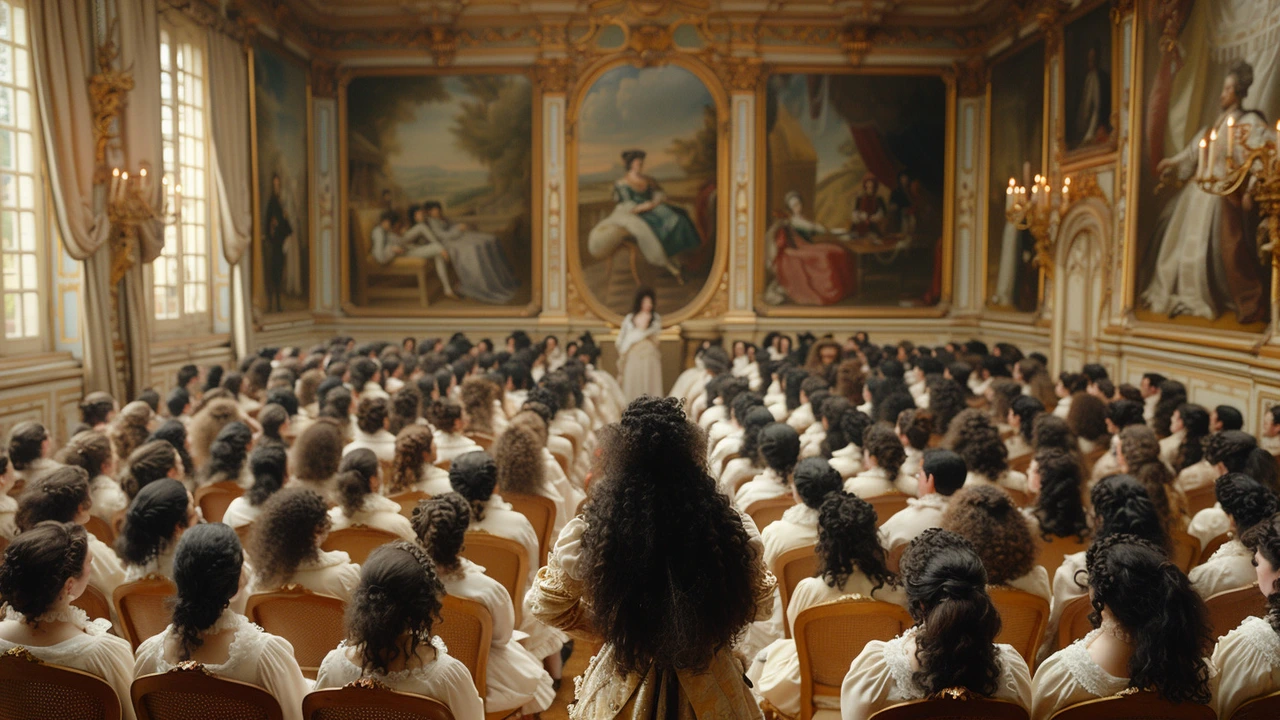Step into my latest exploration - the intriguing and elegant world of Rococo art. Through this comprehensive guide, I aim to unravel the astounding beauty that lies within this 18th-century French art style. From architects to painters, this guide will introduce you to the masters of the Rococo era, their distinguished techniques, and their most iconic works. Join me and be ready to appreciate this grandeur packed with complexity and elegance, as we together embark on a journey through art history.
Beauty of Rococo: Light Rooms, Soft Curves, Big Personality
Did you know Rococo began as a quiet revolt against heavy, formal Baroque rooms? In the early 1700s, designers in France chose small-scale, playful decoration over grand, rigid drama. The result feels personal: intimate salons, delicate colors, and details that invite you to lean in and look closer.
What makes Rococo stand out
Want to spot Rococo fast? Look for flowing S-curves, asymmetry, and lots of scrolls and shells—called rocaille. Walls and ceilings often mix pastel paint, gilt moulding, and painted scenes of light-hearted myth or flirtatious gatherings. Mirrors and crystal chandeliers bounce soft light around, making rooms feel airy. Furniture follows the same idea: cabriole legs, carved ornament, and upholstery in pale fabrics.
Rococo grew from French salons but spread across Europe. In Bavaria you’ll find churches that combine spiritual drama with delicate plasterwork. In Russia, palaces went full-on with gilded shells and floral stucco. Famous examples include the Amalienburg in Munich and the interiors by François de Cuvilliés. Painters like Jean-Honoré Fragonard and Antoine Watteau shaped the style’s mood—playful, romantic, and focused on daily pleasures.
Use Rococo ideas in modern spaces
You don’t need a palace to borrow Rococo’s charm. Try one or two genuine touches: a gilded mirror, a small carved console, or a floral tapestry. Keep the rest of the room simple so those pieces pop. Pastel walls, soft lighting, and a chandelier can give a modern apartment that Rococo lift without feeling dated. If you love contrast, pair an ornate Rococo chair with a clean-lined sofa—the mix looks intentional and fresh.
Looking to restore or collect Rococo pieces? Check for hand carving, old gilding, and signs of age in joints and patina. Provenance matters—ask sellers for history or restoration records. If you plan repairs, use a conservator who knows gilding and period finishes; harsh sanding or modern paint can erase the original craftsmanship.
Rococo isn’t about matching every detail. It’s about mood: lightness, intimacy, and a little surprise around each corner. Next time you walk into an old salon or a baroque palace wing, look down the moulding, spot the shells, and notice how small, playful details change the whole room. Want more examples or ideas for using Rococo in a small home? Stop by our galleries and guides at Architectural Artistry Chambers for photos, room-by-room tips, and sources for authentic pieces.

